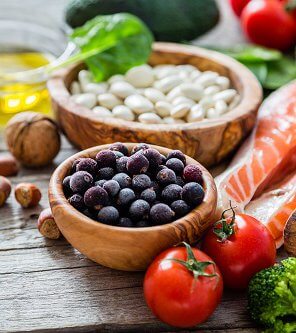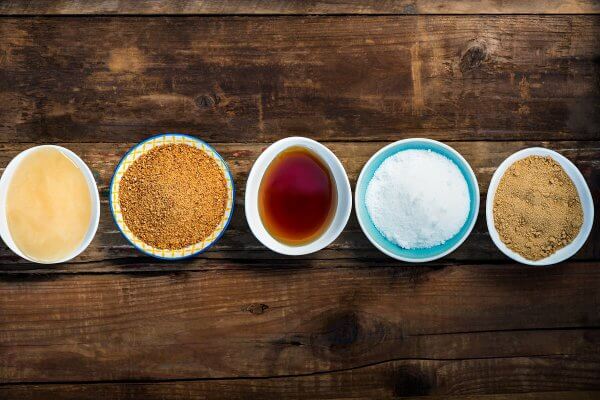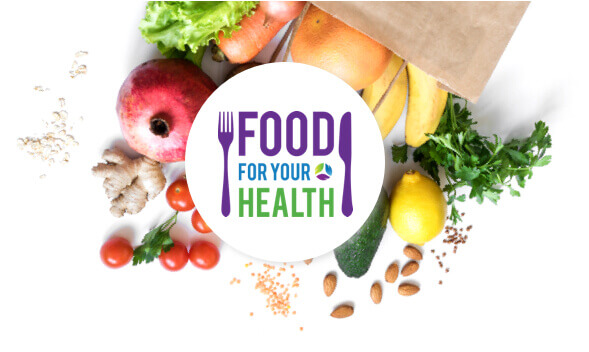
21 Jan 2022 The truth about sugars and non-nutritive sweeteners
In July 2021 the publication of the UK’s National Food Strategy-The Plan shone the light once again on the ongoing costs of poor diets, defined as those high in fat, sugar and salt (HFSS) and the impact on population health and the NHS. One of the recommendations within the plan is the introduction of a sugar and salt reformulation tax prompting BANT to look at the current evidence once again on sugars and non-nutritive sweeteners.
Excess dietary sugars have been associated with the development and sustained incidence of Metabolic Syndrome (1). Over the past few decades, artificial or non-nutritive sweeteners have been used as a ‘healthier’ alternative to sugar, but with what impact on non-communicable diseases? Whilst the scientific results remain contradictory, the case is building against added free-sugars, as links are made with risk of death from all-cause mortality and the development of type 2 diabetes and heart disease (2). See our latest Nutrition Evidence Alert on this topic with all the latest research.


Sugar Basics
All carbohydrate foods contain natural sugars in the form of glucose, fructose, maltose and lactose. You’ll notice a common theme here as each of these sugars ends with ‘ose’ helping us to easily identify them as sugar. Carbohydrate foods encompass grains, cereals, legumes, nuts, seeds, fruits, starchy vegetables, and dairy products. The sugars in these foods are bound to other nutrients which help slow their release into the blood stream (this is a good thing!). For this reason, they are classed as nutritive sweeteners as they provide nutrient value. Carbohydrate foods are classified by used a rating called the glycemic index (GI Index) which ranks carbohydrates on a scale from 0 to 100 according to the extent to which they raise blood sugar (glucose) levels after eating. This ranking considers the combined effect of the amount of sugar in foods and its availability. Foods with a high GI are those which are rapidly digested, absorbed, and metabolised and result in marked fluctuations in blood sugar (glucose) levels. Low GI carbohydrates are the ones that produce smaller fluctuations in your blood glucose and insulin levels. The important thing to note is that this is not a ranking of how healthy carbohydrate foods are. These foods also naturally contain other essential nutrients such as fibre, vitamins, minerals, and phytonutrients. It is however a useful guide to help balance and optimise the natural sugars in an individual’s diet. To give some examples:
- Wholegrain bread has a lower GI than white bread thanks to the fibre it contains
- Cucumbers have a lower GI than a banana as they naturally contain less sugar
Free Sugars
By contrast, free sugars are those added to processed products by manufacturers such as, in breakfast cereals, sauces, fizzy drinks, confectionery, baked goods, ready meals etc or that we add ourselves such as a teaspoon of sugar in your mug of tea, or spoonful of honey or maple syrup in yoghurt (yes even honey is a free sugar despite being natural). These sugars, as their name suggests, are free for the body to absorb quickly causing marked fluctuations in blood sugar (glucose) levels as mentioned above. The balance between optimising the consumption of natural sugars in carbohydrate foods and the added consumption of free sugars is where the line between long-term health is drawn. Too much sugar, of any kind, can start to tip the balance towards metabolic dysregulation, blood sugar imbalances, insulin resistance and the onset of Type 2 Diabetes Mellitus. Download our metabolic fact sheets for more on each of these.

Non-Nutritive Sugars
So, what about the many sugar substitutes now available on the shelf? These sugars are typically labelled as non-nutritive sugars which, as the name suggests, provide no known nutrient value. The main function for these sweeteners is to provide sweetness minus the calories but is it really that simple?
The problem
The problem lies in not knowing whether these non-nutritive sugars are as good as they seem or whether they are in fact as harmful to health as excessive consumption of natural and free sugars. What is emerging is study after study in which these ‘calorie-free’ sugars are repeatedly being shown to have similar effects on weight, waist circumference, metabolic disorders including cardiovascular disease and Type 2 Diabetes Mellitus (T2DM), and wider gastro-intestinal symptoms. This is not definitive proof that they are bad however it certainly raises questions about whether they can be considered ‘healthy’.
What’s more, food labelling makes it increasingly difficult to identify these sugars in everyday food products. They don’t all share a common ending like the ‘ose’ we saw above. Instead, they have unfamiliar and complicated chemical names such as:
- aspartame (one of the first artificial sweeteners and x180 sweeter than sugar!)
- saccharin
- sucralose
- acesulfame potassium (acesulfame-K)
- cyclamate
- stevia
To complicate things even further we also have a third group of sugars called sugar alcohol or polyol, which are considered as nutritive, but are just as easy to make artificially. These include:
- erythritol
- isomalt
- maltitol
- mannitol
- sorbitol
- xylitol
 Try taking a look at a food label for biscuits and see just how many of these you can spot. Many products contain a mixture of these making the accumulative total of sugars (nutritive and non-nutritive) higher than would be deemed ‘healthy’ in nutritional terms. This is where cooking-from-scratch can help you gain more control over your ingredients and limit excessive amounts of sugars. A home-made biscuit typically has just 3-4 ingredients (butter, flour, sugar) compared to shop-bought which can contain more than 10 ingredients including multiple forms of sugar.
Try taking a look at a food label for biscuits and see just how many of these you can spot. Many products contain a mixture of these making the accumulative total of sugars (nutritive and non-nutritive) higher than would be deemed ‘healthy’ in nutritional terms. This is where cooking-from-scratch can help you gain more control over your ingredients and limit excessive amounts of sugars. A home-made biscuit typically has just 3-4 ingredients (butter, flour, sugar) compared to shop-bought which can contain more than 10 ingredients including multiple forms of sugar.
Finally, there are other things masquerading as sugars, for example modified starches (typically made using corn, wheat, or potato) such as maltodextrin. These starches – derived from carbohydrate foods which as we saw earlier naturally contain sugars – are often used to replace fats in foods and help reduce the total number of calories in that product (which sounds good). However, this is a tool used by manufacturers precisely because they do not have to be declared as sugar despite having a high GI which, as we mentioned earlier, can cause marked fluctuations in blood sugar (glucose) levels. Simply put, this is a nifty trick to get around the sugar conundrum.
Sugar Consumption Guidelines
 The current guidelines on sugar consumption published by the Scientific Advisory Committee on Nutrition’s (SACN) recommend no more than x7 teaspoons of sugar daily in adults, equivalent to 30g, and less in teenagers and children (3). Get to know your sugars with our handy one-page guide. The reality is that many people consume more than this daily and/or are lulled into a false sense of security by calorie-free non-nutritive sweeteners which may not be all they are cracked up to be. As with most things in nutrition, there is never a silver bullet. Instead, it’s about balance and optimising the diet to achieve a healthy intake of nutrient-dense foods whilst limiting sugars to within healthy parameters.
The current guidelines on sugar consumption published by the Scientific Advisory Committee on Nutrition’s (SACN) recommend no more than x7 teaspoons of sugar daily in adults, equivalent to 30g, and less in teenagers and children (3). Get to know your sugars with our handy one-page guide. The reality is that many people consume more than this daily and/or are lulled into a false sense of security by calorie-free non-nutritive sweeteners which may not be all they are cracked up to be. As with most things in nutrition, there is never a silver bullet. Instead, it’s about balance and optimising the diet to achieve a healthy intake of nutrient-dense foods whilst limiting sugars to within healthy parameters.
So where do you go from here?
A natural first step to understanding your current sugar intake is to firstly look at your free sugar consumption, including any non-nutritive sweeteners you may be using in place of table sugar. Do you add sugar to hot beverages or to breakfast cereal? Do you regularly add honey or syrups to foods and drinks? Do you regularly consume processed foods such as biscuits, breakfast cereals, baked goods, ready meals, sauces, desserts, and frozen desserts that contain added sugars? These are the easiest of the sugars to identify, optimise, reduce, or even remove from your diet.
To take this a step further, working with a Registered Nutritional Therapy Practitioner can help you fully evaluate your diet and optimise your complete sugar intake as part of wider dietary recommendations to support your health and well-being. Practitioners are qualified in personalised nutrition and work on a one-to-one basis to help individuals implement a food-first approach in the promotion of health, peak performance, and individual care. Find a Practitioner at bant.org.uk
References:
- https://www.nutrition-evidence.com/article/32644139?term=32644139
- https://www.nutrition-evidence.com/article/34444794?term=34444794
- https://www.nhs.uk/live-well/eat-well/how-does-sugar-in-our-diet-affect-our-health/


